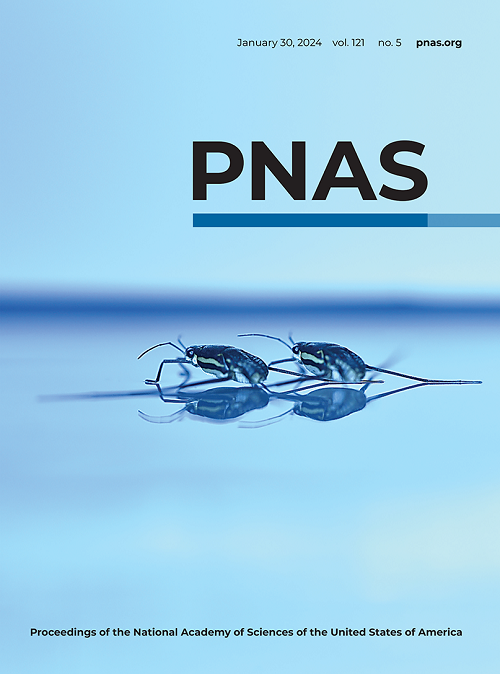Mussel-inspired cross-linking mechanisms enhance gelation and adhesion of multifunctional mucin-derived hydrogels
IF 9.4
1区 综合性期刊
Q1 MULTIDISCIPLINARY SCIENCES
Proceedings of the National Academy of Sciences of the United States of America
Pub Date : 2025-02-19
DOI:10.1073/pnas.2415927122
引用次数: 0
Abstract
Mucus supports human health by hydrating, lubricating, and preventing infection of wet epithelial surfaces. The beneficial material properties and bioactivity of mucus stem from glycoproteins called mucins, motivating the development of mucin-derived hydrogels for wound dressings and antifouling coatings. However, these applications require robust gelation and adhesion to a wide range of substrates. Inspired by the chemical cross-linking and water-tolerant adhesion of marine mussel adhesive structures, we use catechol–thiol bonding to drive gelation of native mucin proteins and synthetic mucin-inspired polymers, forming soft, adhesive hydrogels that can be coated onto diverse surfaces. The gelation dynamics and adhesive properties can be systematically tuned by varying the hydrogel composition, polymer architecture, and thiol availability, with gelation timescales adjustable from seconds to hours, and values of elastic modulus, failure stress, and debonding work spanning orders of magnitude. We demonstrate the functionality of these gels in two applications: as tissue adhesives, using porcine skin as a proxy for human skin, and as bioactive surface coatings to prevent bacterial colonization. The results highlight the potential of catechol–thiol cross-linking as a versatile platform for engineering multifunctional glycoprotein hydrogels with applications in wound repair and antimicrobial surface engineering.求助全文
约1分钟内获得全文
求助全文
来源期刊
CiteScore
19.00
自引率
0.90%
发文量
3575
审稿时长
2.5 months
期刊介绍:
The Proceedings of the National Academy of Sciences (PNAS), a peer-reviewed journal of the National Academy of Sciences (NAS), serves as an authoritative source for high-impact, original research across the biological, physical, and social sciences. With a global scope, the journal welcomes submissions from researchers worldwide, making it an inclusive platform for advancing scientific knowledge.

 求助内容:
求助内容: 应助结果提醒方式:
应助结果提醒方式:


